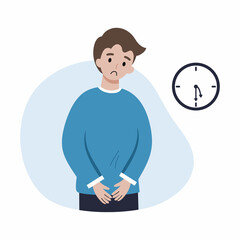Overview
Welcoming you once more to the dynamic space of The Design Files where we delve into the myriad aspects of architecture and home improvement. This time we venture into a compelling territory that's often overlooked the intersection of design and disability. What happens when you or a loved one's need for home transitions from the realm of comfort to required care? How can home interiors play a pivotal role in providing care for those with mobility issues? These are just some of the thought-provoking queries that we’ll be exploring herein.
In this comprehensive guide, we pull back the curtain on a dimension of the design world that largely remains unseen. We focus on disability home care a realm that brings together comfort, safety, and aesthetics in a profoundly holistic fashion. This comprehensive journey tours the space where functionality meets aspiration, tracking innovation, practicality and, above everything else, compassion.
Can design and architecture indeed assist in easing the daily life of those with mobility challenges? We believe the answer resoundingly echoes 'Yes', and in this post we'll discuss practical solutions that bring a sense of independence and dignity to navigate the challenges of disability in the field of home enhancement and decoration.
Understanding the Significance – Why Disability Home Care Solution is Crucial
As it is stated often but understood seldom, disability can touch anyone at any juncture of life. When that happens, the primary aim remains preserving one's independence and mobility, while remaining in the familiar surroundings of one's home. This is where “ageing in place” or disability home care concepts come in.
Not just easier on the budget, familiar home surroundings have been shown to support emotional well-being which plays a pivotal role in overall health and recovery. This emotional connection necessitates a house adapting to the individual rather than the individual adapting to the house. Traditionally, this was challenging, but technological advancement and innovation in design thought have opened up exciting possibilities.
However, integrating disability-friendly elements into a house involves more than just adding infrastructural changes or medical equipment around the living space. It's about creating a seamless, barrier-free zone where living comes easy. This means approaching the subject from a perspective of aesthetic dignity and not just functional requirement, which is a balance that's difficult yet rewarding when accomplished.
Nitty-Gritty Details – What Goes into Crafting an Accessible Living Space
An accessible home addresses the visible and invisible challenges that arise from mobility issues. Designing such a space involves paying exceptional attention to aspects like door width, hallway clearance, bathroom layout, furniture arrangement, and motion sensor technology.
Consider ramps for example. Having a ramp instead of steps at all entrances can be a game-changer for people with mobility equipment. The same applies to widened doors and hallways. Using furniture that sits higher off the ground can ease transfers from a wheelchair while in the bathroom, a roll-in shower and extended tap handles can significantly enhance independence.
But it's not simply about the large changes. Attention to minute details can also have profound impacts. Lever type door handles and light switches that are at an accessible height, pull out shelves and cabinets in kitchens and storage areas, automatic or voice-controlled lighting systems these are just some of the elements that can infuse the spirit of independence into a living space.
Intelligent Design Invigoration – The Benefits of a Disability Friendly Home
A well-designed disability-friendly home embraces three pillars freedom, safety, and dignity. Such a space lets the individuals navigate around with ease and possibly without dependence, reduces the risk of accidents, and ultimately makes a person feel dignified, not helpless.
Integrating surgery units and medical tools discreetly into the architecture and interiors can make a home feel less clinical and more comforting. Strategically placed handrails, for example, that stylishly blend with the décor and also provide the much-needed support, can make a world of difference. It can transform the space into an empowering personal haven, not just any disability-restricted house.
Unveiling the Layers - The Possible Challenges
Despite the huge leaps in technology and design innovation, challenges continue to exist when integrating disability home care solutions. The lack of awareness and the associated cost implications are common deterrents. Plus, people still grapple with the balance between aesthetics and functionality.
Addressing these can begin with spreading more awareness about the hop scope of accessible designs, breaking the myth that it's exclusively for elderly or disabled individuals. For cost implications, there’re grants and benefits available which often go unnoticed due to lack of information. The design industry can play a great role in this small address these issues.
Crafting a Beautiful Tomorrow – The Future of Disability Home Care
The future of disability home care is brighter and more engaging with emergent technologies like IoT, AI, and smart home concepts steering the future. Voice-controlled home appliances, intelligent lifts and hoists, automatic door openers and window controls, remote-controlled power sockets, and video-entry systems usher a sense of liberation and control, making daily life more manageable and less stressful.Another transformative innovation enhancing this landscape is the integration of Electronic Health Records (EHR) systems. These digital records aren't just tools for hospitals anymore they're becoming crucial in home care, too. The top 10 benefits of EHR systems for patients and doctors in 2025 include improved patient-doctor communication, real-time access to medical histories, reduced medication errors, faster diagnosis and treatment, enhanced data security, streamlined remote consultations, personalized care plans, better chronic disease management, reduced paperwork, and seamless coordination between caregivers and specialists. When implemented in home settings, especially for individuals with long-term disabilities, these systems offer a way to bridge care gaps and ensure continuous monitoring with minimal friction.
Conclusion: Weaving Independence into the Home Design Fabric
What we've navigated together throughout this post makes one thing abundantly clear disability home care goes beyond just functionality. It's a journey into a world where design doesn't just, please the eyes, rather uplifts the spirit of the individual and enables them to enjoy the life they deserve.
What matters is not the fact that we all grow old or may experience transient or permanent limitations to our mobility. What truly matters is how elegantly and empathetically we adapt to those changes. And in this evolution, architects, designers, technology innovators, caregivers, and, above all, our own perspectives play an instrumental role.
Remember, at the end, the process is just about making a house a home – a home that helps, heals and harmoniously hums the song of independence. Therein lies the essence of true home improvement - one that 'improves' lives, not just spaces. Ultimately, 'home' isn't merely a location; it's an emotion. Let's continue to design that feeling, seamlessly and eternally.







